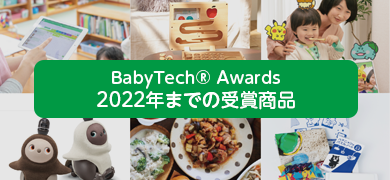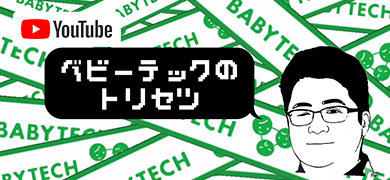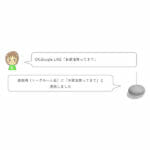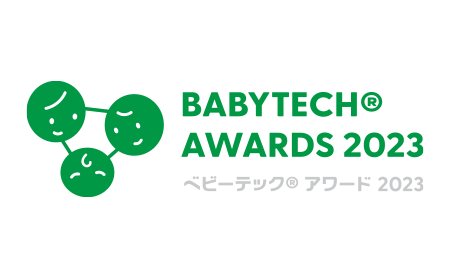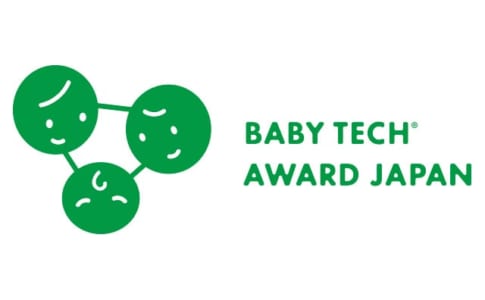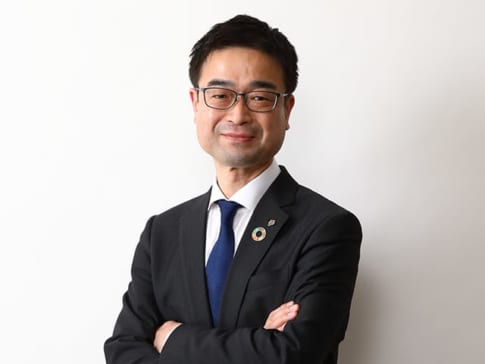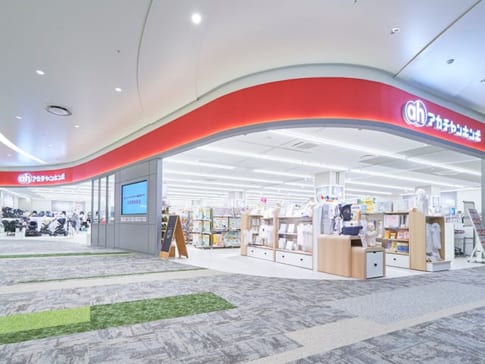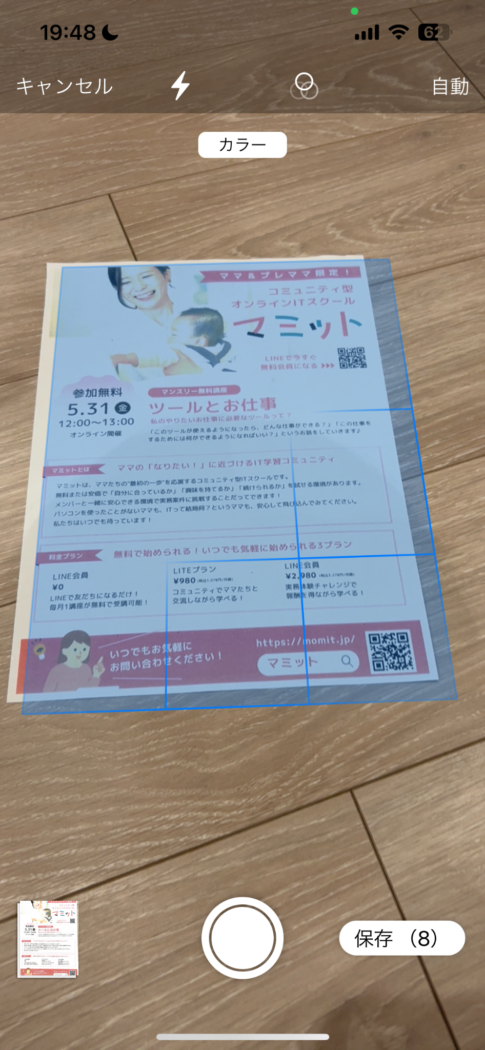- Utilizing the company's longstanding knowledge of "watchful waiting systems in nursing care
- Thorough attention to usability in childcare settings, such as "non-contact and cordless
- The desire to protect children's lives is at the root of our product manufacturing.
(Interviewed by.)
Bio Silver Co.
Representative Director Mr. Keizo Harada
Ms. Fuko Kurokawa, Sales Department Manager
Ms Maki Imai, Sales Department
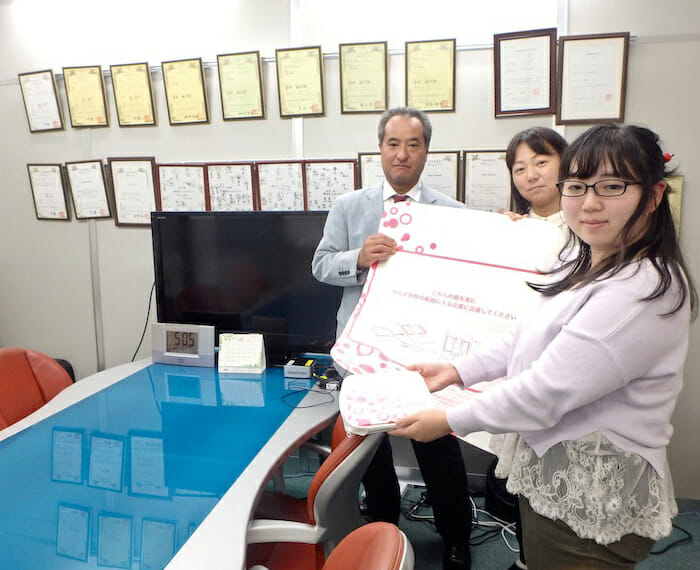
From left to right: Mr. Harada, Mr. Kurokawa, Mr. Imai (honorifics omitted)
Products that are thoroughly focused on "child safety" and "ease of use in the field
Editor: Thank you very much for taking time out of your busy schedule today. Could you give us an overview of the Smile Baby product?
Imai: First, this is the "mat and sensor unit" of Smile Baby. And this is the dedicated data management server. By connecting this server to a display such as a TV, data is shown on the screen. The data detected by the "Mat and Sensor Unit" is sent to the server wirelessly in real time.
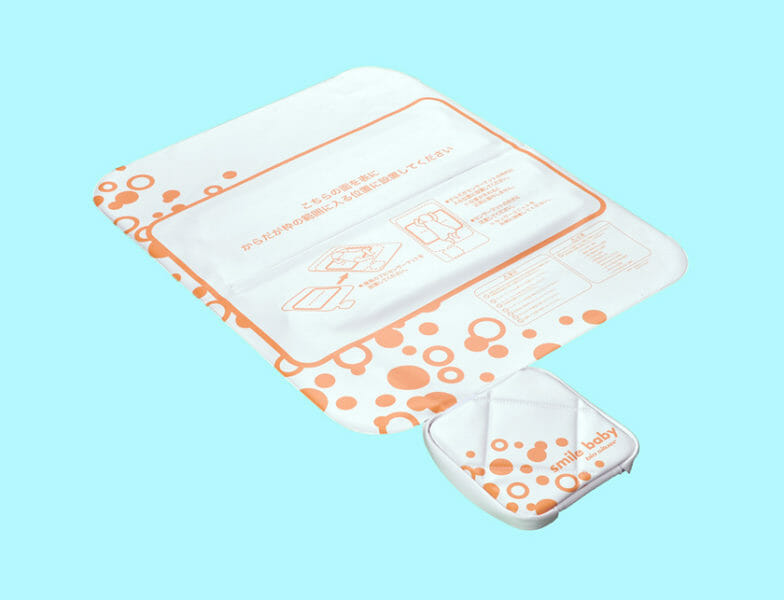
Editor: So the mat and sensor are completely cordless, with no power cord?
Harada: That's right. Kurokawa, who was involved in the development of this product, is a former childcare worker, and as someone who knows the field well, he was very particular about making it completely cordless. We also carefully selected the material of the mat so that it can be wiped clean when it gets dirty from peeing.
Kurokawa: When cords are around the feet of napping children, they can be very dangerous, wrapping around their fingers and stopping blood flow, or catching their feet and causing them to fall. The prototype of this product had a power cord, so we pointed this out to them.
Imai: As a result, we've improved the power supply to include a battery in the sensor unit's case cover. To use the sensor, place it and the mattress under the mattress or baby futon on which the child will sleep. It's compatible with mattresses up to 25cm thick.

Editor: Even through such a thick mattress, you can see your breathing and heart rate very clearly and in real time!
Imai: Yes. If the child's body is over the measurement area displayed on the mat section here, the data can be recorded.

Harada: Actually, the size of the mat (i.e., the size of the measurement area) is also based on Kurokawa's experience in the field of childcare.
Kurokawa: Children who are taking a nap move their bodies a lot, turning over and so on. That's why we asked them to make the mat that detects the data quite large. If the mat is too small, the children will quickly move out of the sensor's detection range. If this happens, an alert sounds, and the childcare workers have to check each time. We were very particular about the size of the mat so that it wouldn't be too much of a burden on the childcare workers.

Imai: Now, in normal conditions, the graph shows breathing, heart rate, and body movement (i.e., whether the patient is at rest or moving slightly). You can also see whether or not there is a child on the bed. Also, if the system detects an abnormality such as a child's breathing or heartbeat stopping, it will immediately alert you with a display on this screen and a sound. The history of the various data can also be printed as a table or graph.
Harada: The reason this device is divided into a mat/sensor section and a data server (plus display) section is to reduce the burden on childcare facilities. In fact, some similar products have alerts that go off right next to the children, in the mat sensor section. This causes children to wake up every time an abnormality is detected, which is very difficult for childcare workers. Smile Baby, on the other hand, alerts the nursery staff at hand or in the office, so they can respond appropriately without waking other children. Of course, the volume can be adjusted.
What the company values in a device that supports naptime monitoring
Editor: Can you tell us about how this product works?
Imai: The inside of the mat is made of urethane and air tubes, so it has an extremely soft structure. It doesn't contain any electrical wiring or sensors, but it detects minute vibrations from breathing, heartbeats, and body movements. In other words, the mat part is like a big stethoscope.
Editor: Is it possible to view the data on a smartphone or tablet?
Imai: Of course it is possible, but basically we recommend using the data server and display of this product. In the case of smartphones and tablets, there is an undeniable possibility that problems may occur due to OS upgrades and other factors. On this point, we think it is safe to say that the method of connecting the data server to your TV, PC or other display with a cable will work reliably. The server is equipped with a mouse for operation, so to speak, and plays a role like the main body of a personal computer.
Editor: What were the main points that you focused on when developing this product?
Kurokawa: First of all, it's a "non-contact method. We've had some nursery schools say that a sensor attached to the body caused a rash on the body, or that the child would touch it out of concern.

Harada: The other thing is that there is no time lag, and the data is displayed in a graph in real time. What we came down to was what nurseries are most concerned about. After all, the most frightening thing is that the child stops breathing. Smile Baby is not a medical device, so it cannot measure exact numbers or record the direction of the child's body like a watchdog device that attaches sensors to the body. However, the most important thing to protect children's lives is to monitor whether they are breathing properly or not. With this in mind, we have focused on monitoring the child's breathing, heartbeat, and body movements in real time and in a clear manner.
Kurokawa: Basically, Smile Baby is not a replacement for nursery staff, but a machine that can watch over naps from the same position. That's why we think of Smile Baby as a device that supports nursery staff in the five-minute gaps between naps, based on the premise that nursery staff watch over the children every five minutes.
Editor: So the goal is not to reduce the workload, but only to reduce accidents and improve the safety of children?
Harada: That's exactly right. This, more than anything else, leads to peace of mind for the daycare center and helps the daycare workers. Also, the fact that this device is watching over them behind their backs helps to reduce the mental stress of the daycare center staff.
The reason behind the company's desire to protect children's lives
Editor: Can you tell us how this product was developed?
Harada: In fact, a friend of the product's developer lost his 0-year-old child to SIDS (Sudden Infant Death Syndrome), and asked us for advice on how to make the world a place where such tragedies do not occur.
Editor: So that's what the developers had in mind...
Harada: After 10 years of development, the nursing care industry was experiencing a serious labor shortage, and there was a growing need for this type of monitoring device, so we first developed and sold a similar product in the nursing care field. This is why we first developed and marketed a similar product in the nursing care field, and then launched Smile Baby at the end of 2017, just in time for the holidays. As a result, we have sold more than several thousand units of this technology and product in the nursing care field. I believe this has led to a sense of security among nursery schools that are considering introducing Smile Baby.
Appreciation from nursery schools and the company's future prospects
Editor: I understand that this product is currently used only in nurseries, but how many of these are out there?
Harada: We started selling the product at the end of 2017 and sold out in less than two months; approximately 300 units have been delivered to 50 parks. We also plan to resume sales of an upgraded version of the product in the fall and winter of 2018.
Editor: Can you tell us about the installation cost?
Harada: Last year, we sold a set of six units as a package to the Tokyo Metropolitan Government for one million yen, including tax. The Tokyo Metropolitan Government subsidized 1 million yen per nursery, so the nurseries were able to install the system without having to take anything out.
Editor: Is there anything special about the feedback from the nurseries that use it?
Kurokawa: Some people said that they were able to notice subtle physical conditions in their children by using this product. They said that they were able to detect changes in the body movement graphs that they could not see visually.
Editor: If we tell the parents about it, they can see the hospital as soon as possible.
Kurokawa: That's right. Because when the condition becomes visible, it may be a serious disease.
Editor: Can you tell us about the future of this product and your company's initiatives?
Harada: In the future, we would like to launch Smile Baby for general households as well. This is definitely something we plan to work on. We also plan to launch a sleep monitoring device around next spring that uses the same sensor technology used in Smile Baby. This device measures the depth of sleep, and could be used in nursing care, for example, to wake a patient when sleep becomes shallow, so that it's time to eat, or to change diapers later because sleep is deep now. Also, since you can see how the quality of sleep changes when you change the medication or bed, you will be able to understand the effect. I think there is a need to measure the relationship between sleep and performance among athletes and luxury hotels. Our goal is to introduce this system in the athletes' village dormitories for the 2020 Olympics.
After the interview...
All you have to do is lay your child down on it and it will watch over them. Because of its easy-to-understand usage and versatility, it can be used with children of any age, making it an extremely easy device to accept in the childcare field. We can't wait for this product to go on sale to the general public, and we look forward to its further development.
We expect to see more and more domestically produced baby tech products from a variety of manufacturers in the future. We're looking forward to it!
★babytech.jp is looking for interview requests from manufacturers. Please contact us from the form.


